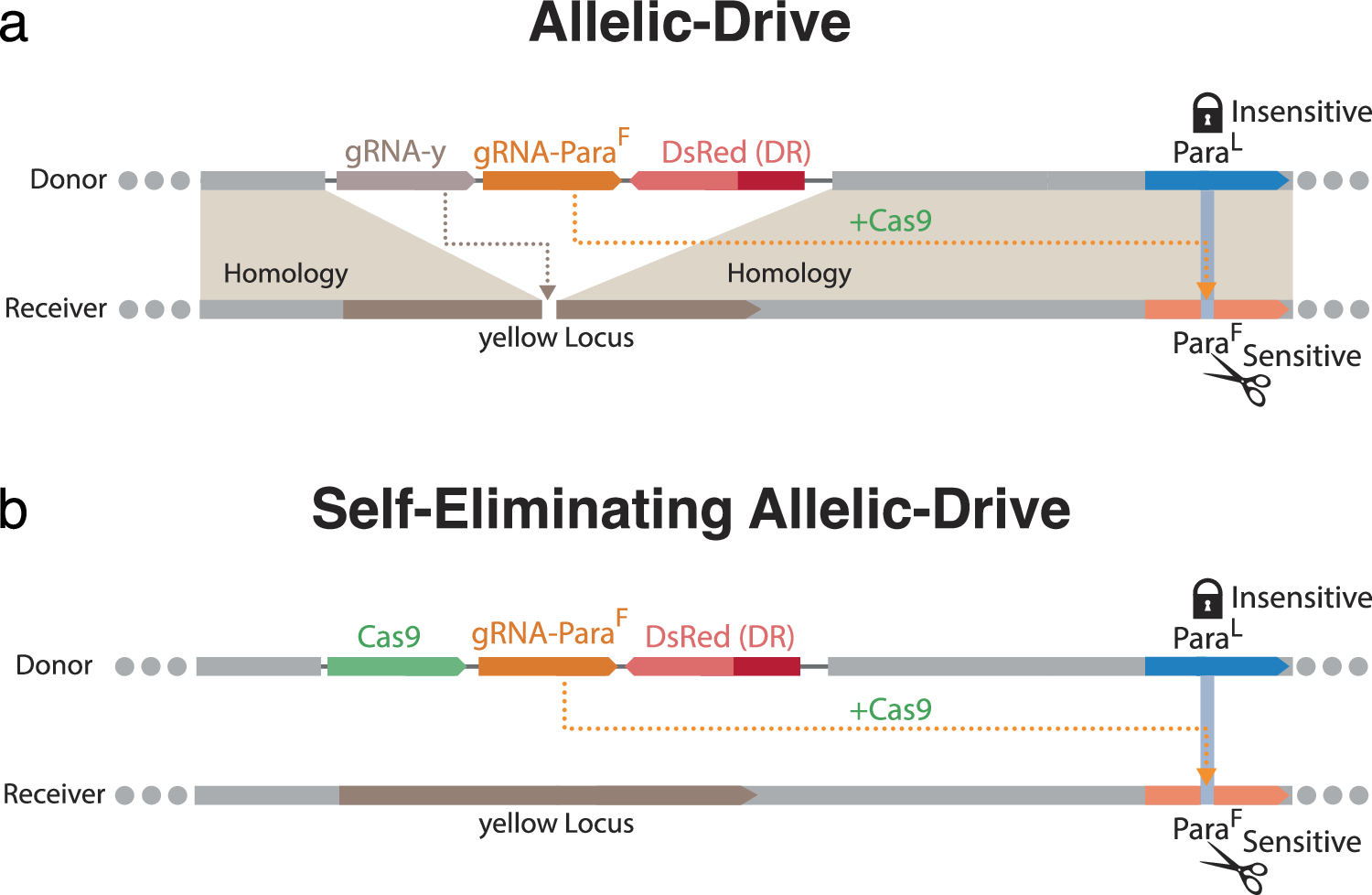2024-11-22 カリフォルニア大学サンディエゴ校(UCSD)
<関連情報>
- https://today.ucsd.edu/story/new-gene-drive-reverses-insecticide-resistance-in-pests-then-disappears
- https://www.nature.com/articles/s41467-024-54210-4
A self-eliminating allelic-drive reverses insecticide resistance in Drosophila leaving no transgene in the population
Ankush Auradkar,Rodrigo M. Corder,John M. Marshall & Ethan Bier
Nature Communications Published:17 November 2024
DOI:https://doi.org/10.1038/s41467-024-54210-4

Abstract
Insecticide resistance (IR) poses a significant global challenge to public health and welfare. Here, we develop a locally-acting unitary self-eliminating allelic-drive system, inserted into the Drosophila melanogaster yellow (y) locus. The drive cassette encodes both Cas9 and a single gRNA to bias inheritance of the favored wild-type (1014 L) allele over the IR (1014 F) variant of the voltage-gated sodium ion channel (vgsc) target locus. When enduring a fitness cost, this transiently-acting drive can increase the frequency of the wild-type allele to 100%, depending on its seeding ratio, before being eliminated from the population. However, in a fitness-neutral “hover” mode, the drive maintains a constant frequency in the population, completely converting IR alleles to wild-type, even at low initial seeding ratios.



